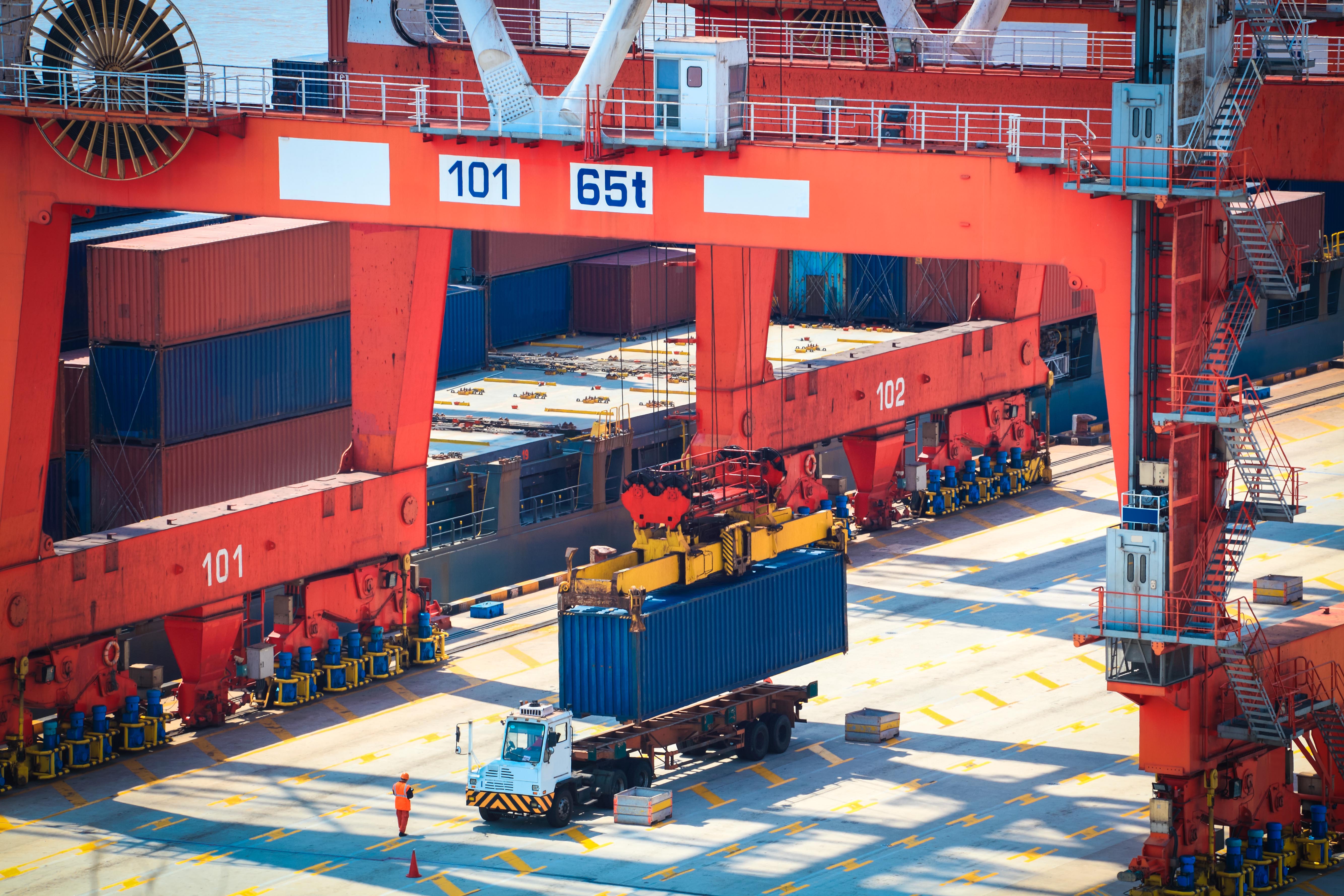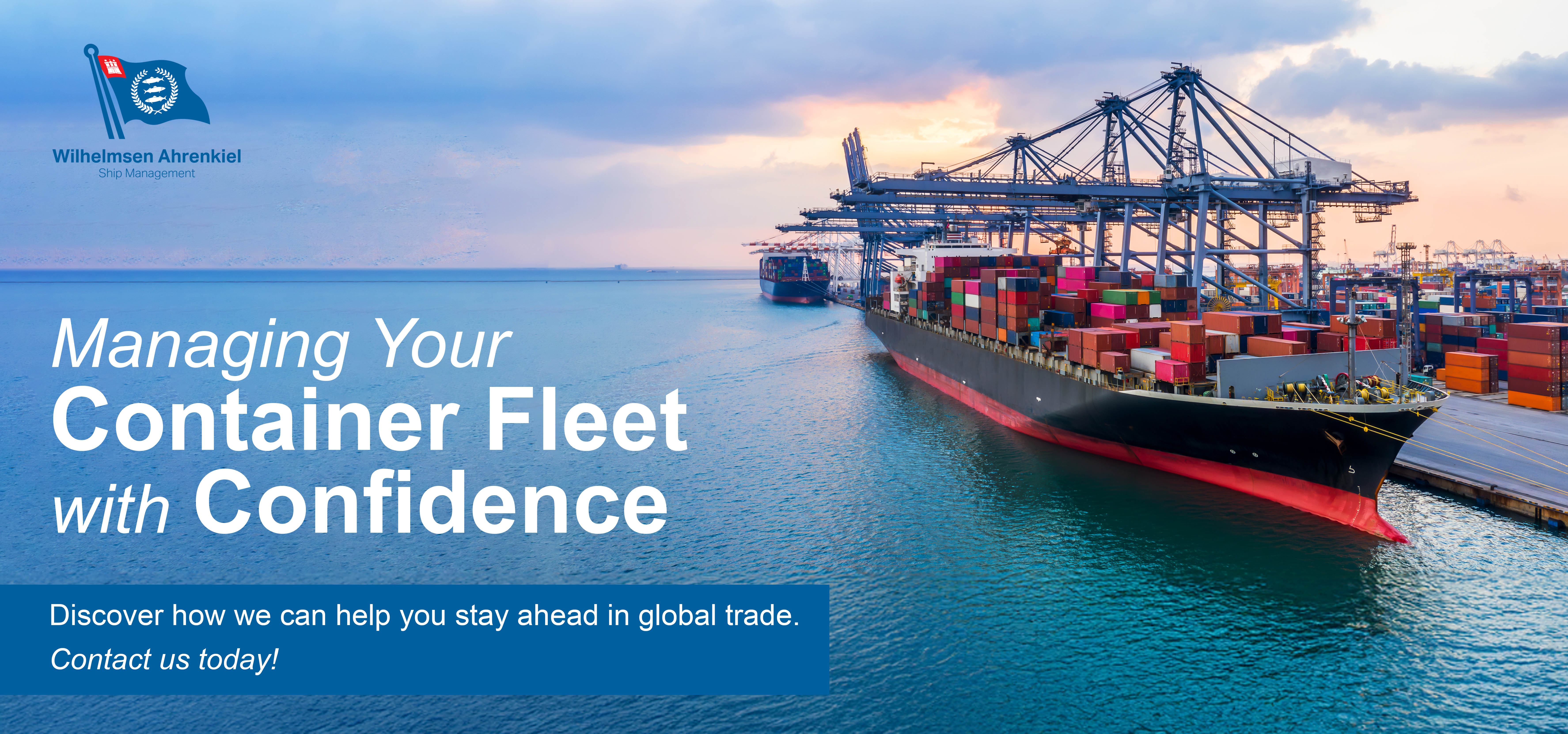The Evolution and Impact of Container Vessels on Global Trade
威尔森观察
|
Wilhelmsen Ship Management
Container vessels have transformed global trade by providing a cost-effective, reliable, and efficient way to move goods across oceans. These ships, designed to carry standardized shipping containers, have revolutionized logistics by enabling seamless intermodal transport on vessel, truck, and train. As global commerce grows, container ships and cargo vessels remain essential to connecting markets and economies worldwide. Wilhelmsen Ahrenkiel Ship Management, a trusted name in maritime operations, manages our container vessel operations.
History and Evolution of Container Vessels
Before containerization, cargo handling was labor-intensive and inefficient. The introduction of standardized containers in the 1950s changed shipping forever. The first purpose-built container vessels emerged in the late 1960s, and the industry has since evolved to feature ultra-large container vessels (ULCVs) capable of carrying over 20,000 TEU (source). This evolution reflects the industry's drive for greater efficiency, scalability, and global trade connectivity.
What is a Container Vessel?
A container vessel is a type of cargo vessel designed specifically to transport standardized containers efficiently. Container sizes, typically 20 or 40 feet, allow for secure stacking and easy handling. These vessels range from small feeder vessels serving regional ports to ultra-large ships moving thousands of containers across continents.
Types of Container Vessels by Size and Trade Role
Container vessels are categorized by size and operational scope, a classification system that reflects their role in supporting diverse trade routes and port infrastructures around the world. These distinctions help match ship design and capacity to the specific needs of regional or global trade, optimizing efficiency and ensuring that vessels can access the ports they serve.
- Feeder vessels: Smaller ships under 3,000 TEU serving regional routes and connecting smaller ports.
- Panamax vessels: Ships sized to transit the original Panama Canal locks (~4,500–5,000 TEU capacity).
- Post-Panamax / Neo-Panamax vessels: Larger vessels (~10,000–14,000 TEU) made viable after the Panama Canal expansion.
- Ultra-Large Container Vessels (ULCVs): The largest ships today, carrying over 20,000 TEU on key global trade routes.
Common Cargo on Container Ships
Container vessels transport a wide variety of goods essential to global commerce. Consumer products like electronics and clothing are some of the most common, enabling global retail supply chains. Industrial equipment and machinery are shipped to support construction and manufacturing industries worldwide. Perishable goods such as food and pharmaceuticals are moved in refrigerated containers (reefers) to maintain freshness and quality. Hazardous materials, including chemicals and flammable substances, are carried in specially designed containers that comply with strict safety standards.
Container vessels are versatile and can accommodate specialized cargo using reefer containers for temperature-sensitive goods and hazardous material containers to ensure regulatory compliance and safe transport.
Major Global Trade Routes
These routes are vital to the global economy, carrying the majority of containerized trade and connecting key manufacturing regions with consumer markets around the world. Understanding these routes highlights how container vessels enable international commerce and efficient supply chains.
- Asia-Europe: Connecting East Asia manufacturing hubs with European markets via the Suez Canal.
- Trans-Pacific: Linking Asia with North America’s West Coast.
- Transatlantic: Serving trade between Europe and North America.
Critical chokepoints—including the Suez Canal, Panama Canal, and Strait of Malacca—are vital arteries of global container shipping. These narrow routes significantly reduce sailing distances and costs, but disruptions—whether due to drought, geopolitical events, or technical issues—can force vessels to take longer, more expensive detours.
According to UNCTAD’s Review of Maritime Transport 2024, by June 2024, traffic through the Panama and Suez Canals was down by over 50% compared to their peak levels, prompting many vessels to reroute around Africa via the Cape of Good Hope—resulting in increased transit times, higher fuel consumption, and elevated operating costs (source). Meanwhile, the Strait of Malacca handles roughly 25% of global maritime trade and about 80% of China’s imported crude oil, highlighting its strategic importance (source).
Design and Construction of Container Ships
Modern container ships are engineered for strength, safety, and performance, ensuring they can withstand the demands of long ocean voyages and maximize operational efficiency.
- Streamlined Hulls & Bulbous Bows: These design features reduce water resistance, leading to improved fuel efficiency and smoother navigation, especially on long transoceanic routes.
- Double-Hull Construction: A double hull adds a second layer of protection against breaches or accidents at sea, improving the vessel’s structural integrity and helping protect the marine environment in case of incidents.
- Cell Guides & Twist Locks: Internal cell guides ensure containers remain properly aligned and secured during loading, transit, and unloading. Twist locks fasten containers together and to the ship’s structure, preventing movement in rough seas.
- Torsion Boxes: These components help distribute stress throughout the vessel’s frame, an essential feature as ships increase in length and capacity.
- Forward Bridge Design: Positioning the bridge closer to the bow improves navigational visibility and allows for more efficient container stacking toward the stern, maximizing capacity.
Operational Advantages of Container Vessels
Container vessels offer several advantages that make them indispensable to global logistics:
- Efficiency: The standardized nature of containers enables fast and precise loading and unloading using gantry cranes and automated port equipment. This reduces port turnaround times and supports tight shipping schedules.
- Economies of Scale: Larger vessels can carry more containers in a single voyage, which lowers the cost per unit and improves profitability. These scale advantages are key to offering competitive shipping rates.
- Security and Safety: Sealed containers minimize theft, tampering, and damage during transit. Additionally, cell guides, twist locks, and double-hull construction enhance the safety and structural integrity of both cargo and vessel.
- Advanced Navigation: Route optimization and vessel design enhancements, including Coanda-effect fairings and forward bridge architecture, contribute to fuel savings and smoother sailing—especially across long ocean crossings (source).

Technology and Innovation
Looking ahead, container shipping is poised for continued transformation driven by technological progress and operational improvements. These developments aim to enhance efficiency, reliability, and performance across global supply chains.
- Greater automation in ports and onboard systems: Automation enables faster cargo handling, improved accuracy, and reduced human error, contributing to shorter port stays and better vessel utilization (source).
- Digitalization and Smart Logistics: Technologies like blockchain, artificial intelligence (AI), and automation are transforming port operations. Ports that have adopted these tools report reduced vessel waiting times, improved cargo tracking accuracy, and more efficient transshipment processes (source).
- Alternative fuels and energy-efficient technologies: The adoption of low-emission fuels—such as LNG, methanol, ammonia, and hydrogen—alongside energy-efficient vessel designs is helping the shipping industry reduce carbon output, manage rising fuel costs, and meet IMO environmental targets under standards like the Energy Efficiency Design Index (EEDI) (source).
- Autonomous and Next-Gen Vessel: Autonomous technologies are reshaping the future of container shipping. Massterly, a joint venture between Wilhelmsen and Kongsberg, is the world’s first company established to manage and operate remote-controlled and autonomous vessels. Its portfolio includes the Yara Birkeland, the world’s first fully electric autonomous container vessel, and ASKO’s electric, self-driving container vessels, which support emission-free transport across the Oslofjord (source). These advancements enhance navigational safety, reduce emissions, and improve operational performance—reflecting the maritime industry's broader commitment to innovation and smarter fleet management.
Challenges Ahead and Opportunities
The container shipping industry faces a complex set of challenges that shape current operations and future developments. These challenges include:
- Stricter environmental regulations: New and evolving international standards from the International Maritime Organization (IMO) require ship operators to adopt cleaner fuels and more efficient technologies. Under IMO's revised greenhouse gas strategy, carbon intensity must drop by at least 40% by 2030, and all ships must meet new Energy Efficiency Existing Ship Index (EEXI) and Carbon Intensity Indicator (CII) requirements, effective January 2023—significantly driving operational change across the industry (source).
- Congested trade routes and chokepoints: High traffic volumes at key maritime passages like the Suez and Panama Canals increase delays and logistical complexity, raising costs and requiring careful route planning (source).
- Climate-related risks: Rising sea levels, extreme weather events, and climate-driven changes disrupt schedules and threaten port infrastructure—causing facility flooding, equipment damage, and supply chain delays, and requiring greater resilience in shipping operation (source).
At the same time, the industry is presented with several opportunities that can enhance global logistics and competitiveness:
- Adoption of low-emission and alternative-fuel vessels: Industry investment in cleaner technologies enables compliance with regulations while reducing operational costs over time (source).
- Automation and digitalization: New technologies improve cargo handling, optimize routes, and provide real-time data for better decision-making, strengthening operational reliability (source).
- Expanding trade lanes and emerging markets: Growth in developing regions is creating new container shipping opportunities. The development of the Middle Corridor (linking China through Central Asia and Caspian routes to Europe) saw freight volumes grow by 84% between January and August 2023, underscoring a shift towards new inland and multimodal routes beyond traditional sea lanes (source).
Conclusion
Container vessels remain the backbone of international trade, carrying most of the world’s manufactured goods and raw materials efficiently across vast distances. Their evolution from modest cargo ships to modern ultra-large container vessels reflects the shipping industry’s dedication to innovation, reliability, and performance. Looking forward, container shipping will continue to adapt to changing global trade dynamics, operational challenges, and technological advancements, ensuring its pivotal role in connecting economies and supporting global commerce.
Interested in partnering with a reliable container ship manager?
Learn how Wilhelmsen Ahrenkiel Ship Management can support your fleet’s performance, compliance, and growth.
